We caught up with the brilliant and insightful Kate Egnaczak a few weeks ago and have shared our conversation below.
Hi Kate, thanks for joining us today. Did you always know you wanted to pursue a creative or artistic career? When did you first know?
My career as a creative was identified for me at a young age by my family. Before I could walk, my grandmother bought me a Stickley drawing table while my parents enrolled me in art classes and kept me stocked with art supplies. However, the coalescence of creativity and professional practice happened when I started taking courses in graphic design in high school. It is interesting because as I grew up, I loved art class in elementary school, but I never saw myself making art a profession. When my middle school art teacher told me I would never be an artist, my attention shifted to competitive sports, and my creative time was limited.
I was halfway through high school before I took an art class, and only because my parents forced the school to change my schedule. Starting from zero meant taking all the intro classes with first-year students, so I enrolled in college studio classes to build a drawing, painting, and sculpture portfolio I needed to apply to college art programs. Taking those classes outside the school day opened my schedule for Graphic Arts 1. I knew immediately, as did my teachers that I had a design talent. As I learned Photoshop and then Page Maker, I started designing page layouts for fictional magazines and overdesigning all my reports and projects for other classes.
I was recruited to design the school newspaper and then the school yearbook. Spending hours in the yearbook office helped me understand what it would be like to make design a career. By the end of my senior year, I was the president of the Art Club and received the art department scholarship for my studies. I continued on to study graphic design in college.
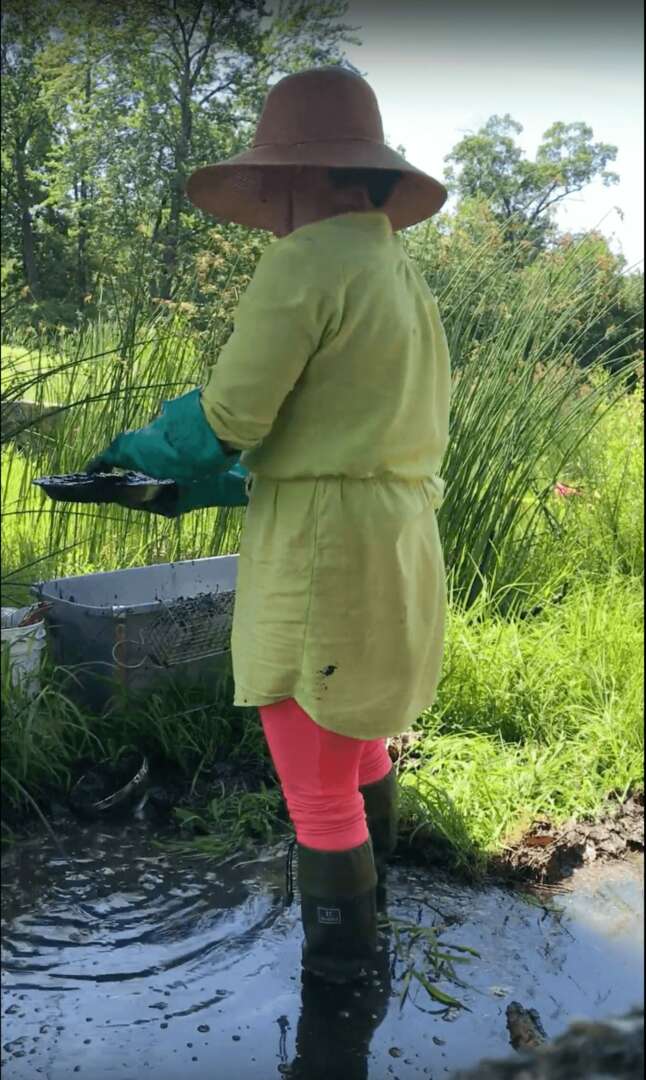
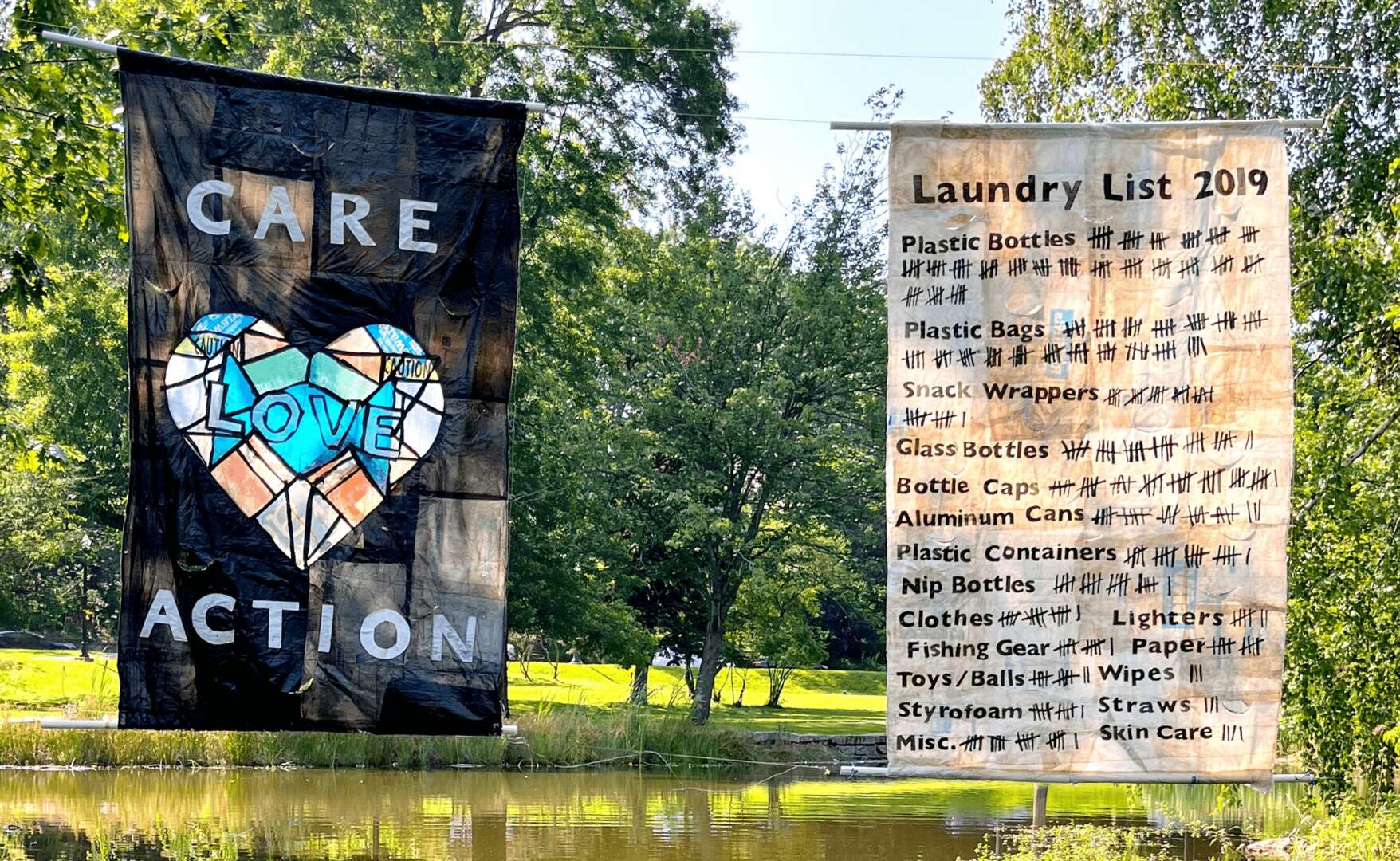
Great, appreciate you sharing that with us. Before we ask you to share more of your insights, can you take a moment to introduce yourself and how you got to where you are today to our readers.
In college, I fell in love with the intersection of Sculpture, 3D studies, and Graphic Design. I found an even deeper interest in the foundations of design and designing by hand rather than on the computer. My interest in designing for print waned as I started to understand the world of package design, environmental graphics, signage, and wayfinding design. I also became increasingly preoccupied with a consciousness of the amount of waste produced in the production of design.
My senior project was developing a banner system for my college campus. This was a departure from my peers as my project was not printed, not even on paper. I made 50 sewn fabric banners and then screen-printed all 50 by hand. This project brought together a 3D design for public space with graphic elements built from design principles.
After college, I landed my dream job as an environmental graphic designer at an architecture firm. I designed signs for buildings and cities with urban and landscape architects. My job was to solve the problems associated with how the public interacts in these spaces. I enjoyed the challenge of solving these problems, especially when I could build 3D mock-ups and spec unique materials and processes. Although I was very proud of my work, I found that the work I did affected people, but I wondered about working closer with the public.
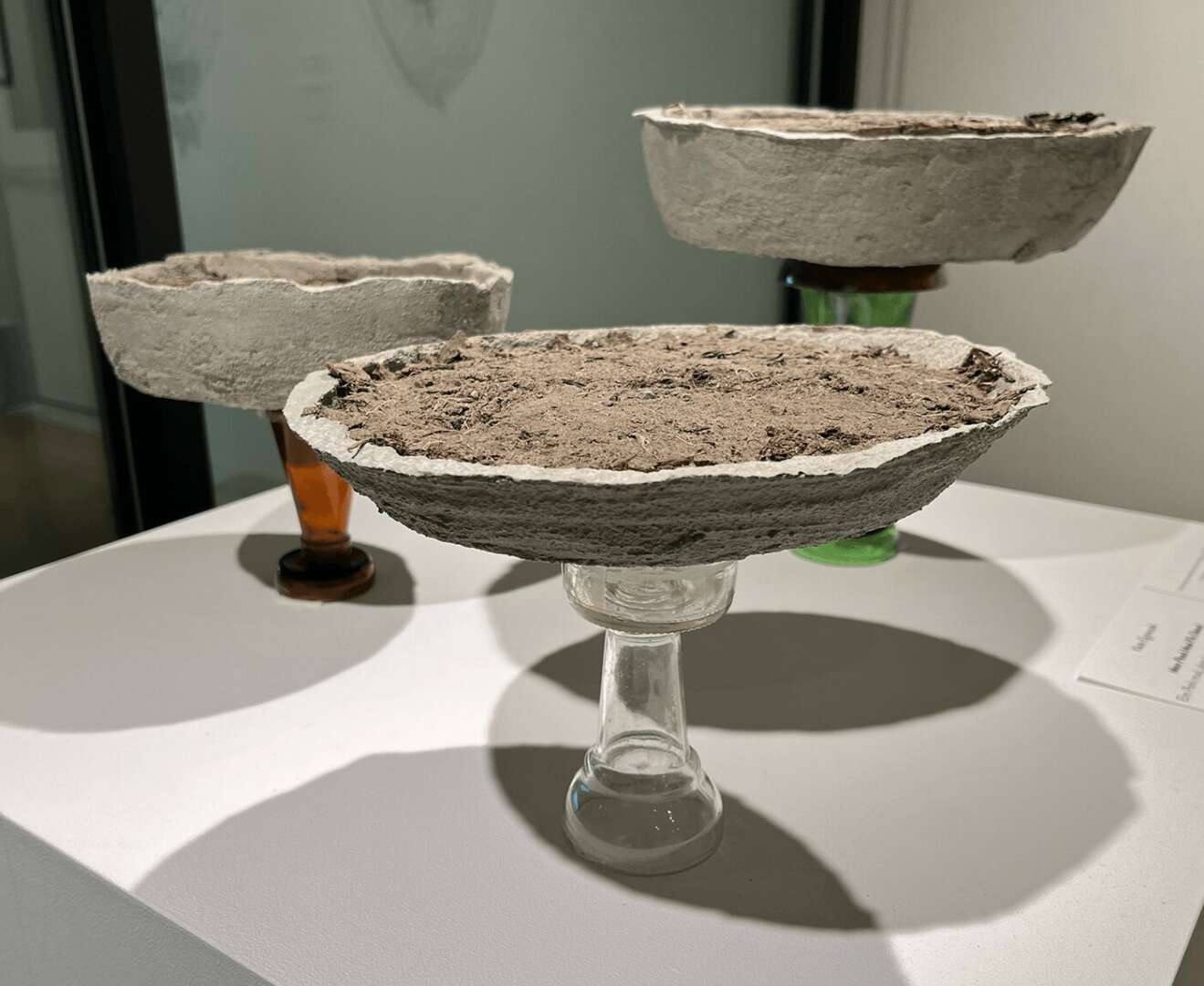
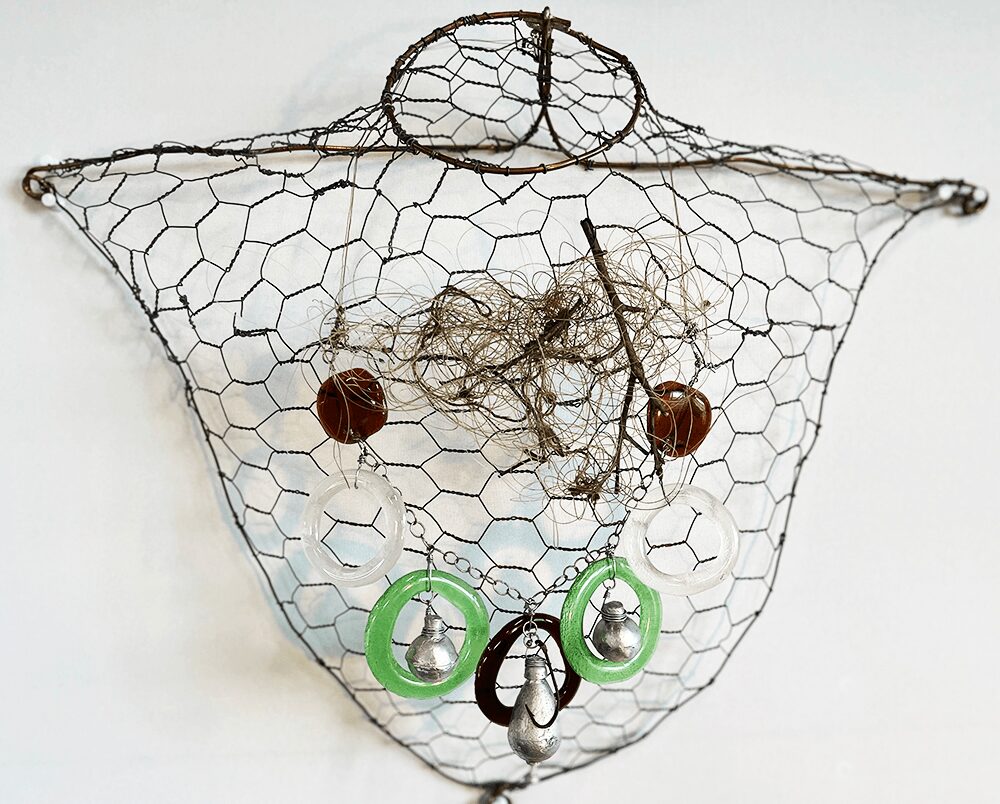
Can you share a story from your journey that illustrates your resilience?
Flash forward about 15 years after a successful career as a graphic designer; those questions about producing waste with my work and working closer to the public kept nagging me. As a designer, I sought an approach to making that would allow me to work with people or at least develop a design for good. As I studied graphic designers who worked similarly, I started finding interdisciplinary connections to other art forms, like sculpture, place-based and site-specific work, public art, and performance.
I had no idea what the change was, but I knew I needed to pivot to meet myself where I was searching. I enrolled in an MFA program at Goddard College in Interdisciplinary Arts, and there, I found the beginning of the answers to my questions. I still identified as a “designer” as well as everyone who knew my work, but I was evolving into an “artist.” The distinction between these two for the average person may be obscure; however, the license to create art was authentic to me and my process.
I started by making art from recycled materials (magazines, junk mail, cardboard), then upcycling old markers into alcohol inks to create paintings, and to my surprise, people purchased them! The deeper I dug into the world of artists and projects developing around the theme of waste and eco-art, the more my search for a soul-soothing medium drove my process.
An honest fascination with mud brought me to a juried outdoor public art show in Worcester, Massachusett’s Elm Park. Working from my paddle board, I made mudpies from sediment blocking a water passage for marine life in the pond. Finally, I had permission to render one of my concepts as an “artist” in public space, in dialogue with park visitors working with waste material. But before I could get to the mud, I was overwhelmed with the amount of trash floating in the ponds, so I started collecting it and hanging it on clotheslines to dry in the park. After washing each piece of trash by hand using only captured rainwater, I started cutting, sewing, and fabricating with the bottles, bags, and cans I extracted from the ponds.
I am in my fifth year working in the park ponds, using this same process. I have created an entire body of work from the waste, including three outdoor sculptures, jewelry, smaller gallery sculptures, collages, and drawings of clothes, toys, and other personal items I have picked up from my paddle board. I’ve become known as a trash artist, but the combination of site-specific performance, sculpture, social practice, and eco-art all rolled into one practice lets the medium choose the direction for my work. I am still putting my design skills and vision to work, but now it serves a public purpose. I found the place that I was meant to be as an artist.
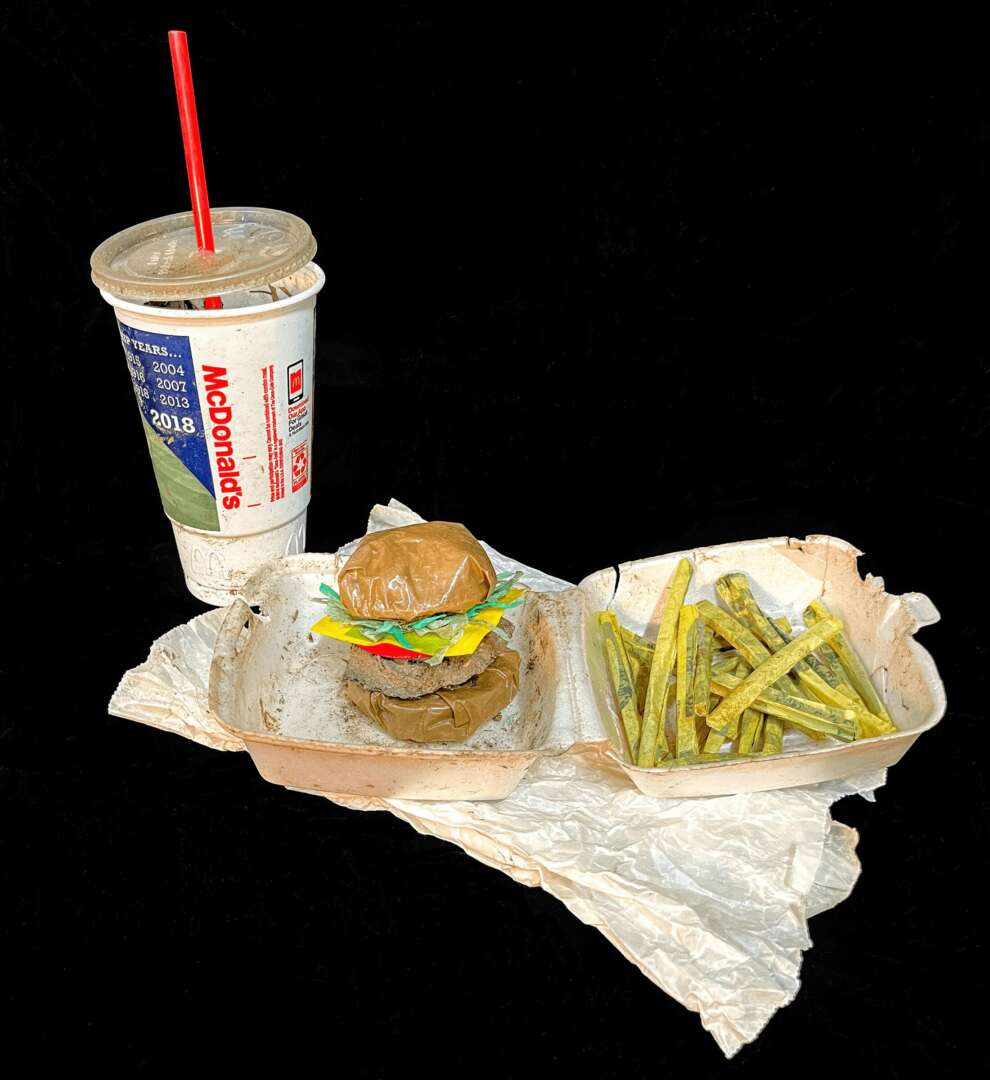
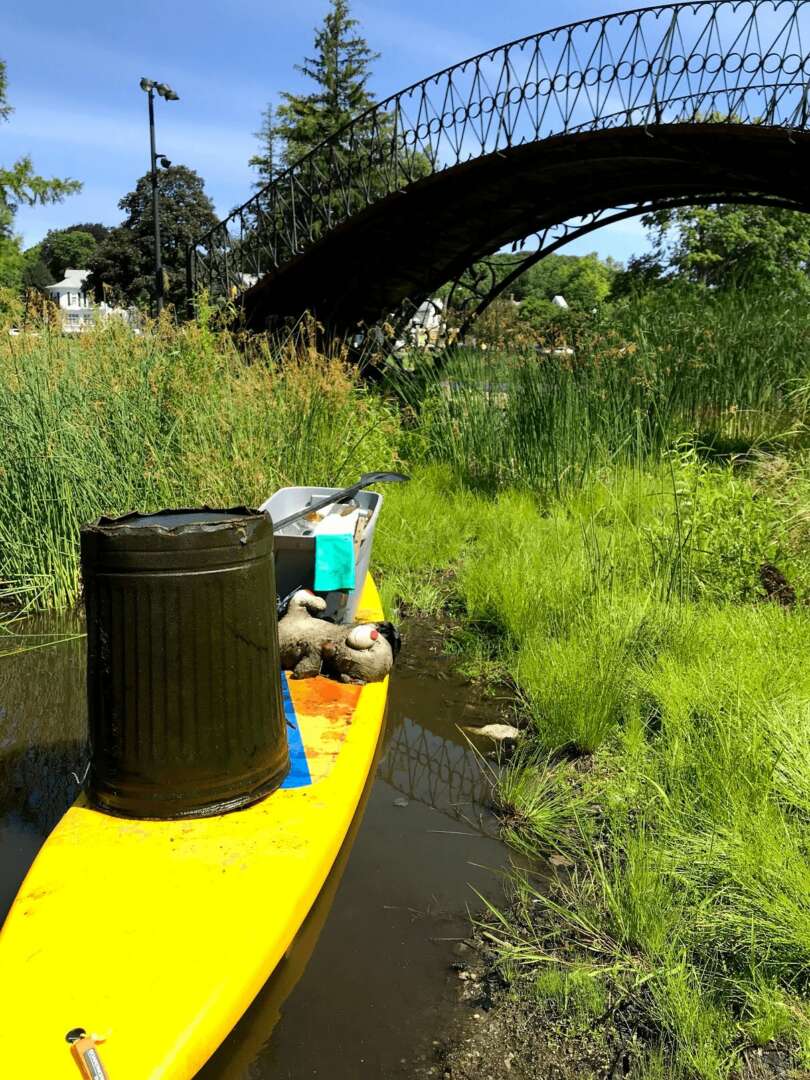
Is there mission driving your creative journey?
My mission in doing the work that I do, in the way that I do it, is to open eyes. To help people see the effects of pollution and the havoc that humans’ consumeristic habits put on our shared ecosystems. An urban park is not necessarily the same as the stories we are surrounded by about plastics in our oceans, but the way I present my work allows people to see that the same challenges exist in their spaces, just on a different scale.
I also offer a solution. My solution is only for some; however, it develops consciousness because the waste is obvious. I’ve had people of all ages tell me that I have inspired them to look twice before throwing something away and even change their consumer habits. Children in the park bring me trash, and I have the honor of overhearing parents talking to their children about what I am doing and why it is essential to help conserve our public spaces and ecosystems.
It might be one human at a time, but I am achieving the vision and mission that drive my work and passion.
Contact Info:
- Website: https://kegnaczak.com
- Instagram: @train_by_living
- Linkedin: Kathryn Egnaczak




